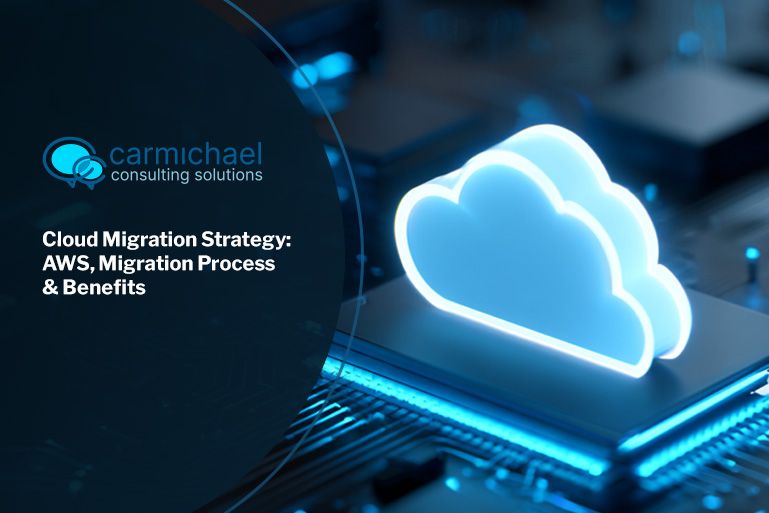
Cloud migration is a major step for businesses moving from on-premises systems to more flexible, scalable environments. Whether you're considering a lift and shift approach or a more complex transformation, having a clear cloud migration strategy is essential. In this blog, we’ll cover the basics of cloud migration, explore common strategies, highlight key benefits, and offer best practices for a smooth transition. We’ll also look at challenges businesses face and how to overcome them.
A cloud migration strategy is a plan that outlines how a business will move its digital assets, services, databases, and applications to the cloud. This process is more than just copying files—it involves rethinking how systems are structured and how they will operate in a cloud environment.
Businesses often start with a clear understanding of their existing workload and infrastructure. This includes identifying which systems are critical, which can be retired, and which need to be restructured. Choosing the right cloud provider, whether it’s AWS, Azure, or another platform, is also a key part of the planning process.
The migration process typically involves several phases: assessment, planning, execution, and optimization. Each phase requires careful coordination between IT teams and business stakeholders to ensure minimal disruption and maximum benefit.

The 6 Rs are common migration strategies that help businesses decide how to move each application or service to the cloud. Each option offers different levels of complexity, cost, and long-term value.
This strategy involves moving applications to the cloud with minimal changes. It’s fast and cost-effective but may not take full advantage of cloud-native features.
Replatforming makes small adjustments to optimize applications for the cloud without a complete redesign. It offers better performance and scalability than rehosting.
This involves replacing an existing application with a cloud-based version, often through a SaaS provider. It’s useful when legacy systems are outdated or too costly to maintain.
Refactoring means redesigning applications to be cloud-native. It’s more complex but allows businesses to fully use cloud computing features like auto-scaling and serverless functions.
Some applications may no longer be needed. Retiring them reduces costs and simplifies the migration process.
In some cases, it makes sense to keep certain systems on-premises, especially if they involve sensitive data or compliance requirements.
A well-planned cloud migration strategy offers several business benefits:

While the benefits are clear, businesses often face challenges during migration. One common issue is underestimating the complexity of moving legacy systems. These systems may not be compatible with cloud platforms and require significant rework.
Another challenge is managing downtime. Even short interruptions can affect operations, so careful planning and testing are critical. Security is also a concern—data must be protected during and after the migration.
Finally, staff training and change management play a big role. Employees need to understand new tools and workflows to ensure a smooth transition.
Following cloud migration best practices helps reduce risk and improve outcomes. Below are several key areas to focus on.
Before starting, evaluate all existing systems, applications, and data. Identify dependencies and prioritize which assets to move first.
Compare providers based on cost, features, compliance, and support. AWS is popular for its wide range of services, but Azure and others may be a better fit depending on your needs.
Break the migration into phases. Set timelines, assign responsibilities, and define success metrics for each stage.
Run pilot migrations to uncover issues early. Testing helps avoid surprises and ensures systems work as expected in the new environment.
After migration, track system performance and user experience. Use analytics to identify areas for improvement.
Ensure IT staff and end users are comfortable with the new tools and processes. Provide training and documentation to support adoption.

Implementation starts with setting clear goals. Know what you want to achieve—whether it’s cost savings, better performance, or increased security. Then, assign a team to manage the project, including both technical and business stakeholders.
Use automation tools to streamline the migration process. These tools can help with data transfer, system configuration, and testing. Also, consider working with a cloud service partner who has experience with similar projects.
Finally, don’t forget post-migration support. Keep monitoring systems, gather user feedback, and make adjustments as needed.
To ensure a successful cloud migration, follow these proven tips:
A thoughtful approach reduces risk and increases the chances of long-term success.

Are you a business with 10 to 350 employees looking to migrate to the cloud? Our team specializes in helping growing companies plan and execute cloud migrations that align with their goals and budgets.
We understand the challenges involved and offer tailored support at every stage—from planning to post-migration optimization. Let Carmichael Consulting Solutions be your trusted partner in building a reliable, secure, and efficient cloud environment.
Migrating legacy systems often starts with a lift and shift approach, especially if the goal is to move quickly. This method moves applications to the cloud without major changes. However, it’s important to assess whether this approach will meet long-term needs.
In some cases, refactoring may be necessary to take advantage of cloud computing features. Businesses should evaluate their workload and consider the cloud provider’s tools to support the migration process.
Choosing the right migration strategy depends on your business goals, budget, and technical requirements. the 6 Rs framework is a helpful guide. For example, rehosting is faster, while refactoring offers more long-term benefits.
Consider factors like system complexity, compliance needs, and future scalability. A detailed migration assessment will help determine the best path forward.
Public cloud platforms like AWS and Azure offer scalability, cost savings, and access to advanced services. They eliminate the need for on-premises hardware and reduce maintenance costs.
These platforms also provide built-in security and compliance features. Businesses can scale resources up or down as needed, making them ideal for growing companies.
To avoid common issues, start with a clear plan and realistic timeline. Identify potential risks early and test systems before going live. Communication is key throughout the process.
Also, ensure your team is trained and ready to support the new environment. Using experienced partners can help reduce migration challenges and improve outcomes.
AWS Cloud Migration tools help automate and simplify the migration process. They support rehosting, replatforming, and other strategies. These tools are especially useful for large-scale moves.
AWS also offers analytics and monitoring features to track progress and performance. This makes it easier to manage complex migrations and ensure a successful cloud migration.
Managing data to the cloud involves careful planning around transfer speed, security, and integrity. Use encryption and backup tools to protect data during transit.
Cloud Volumes ONTAP and similar services help manage storage efficiently. They support data replication and recovery, making the migration process smoother and more reliable.
